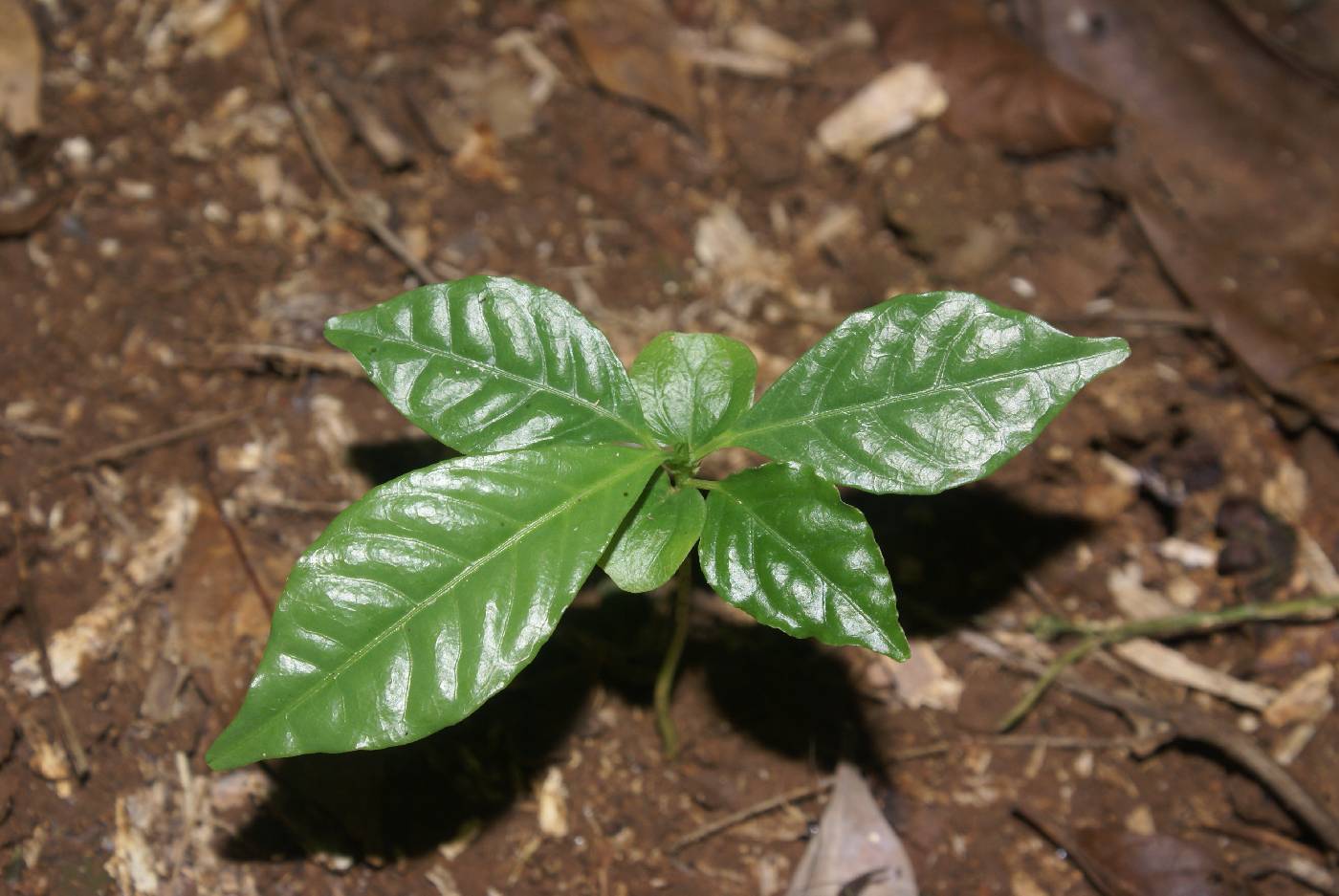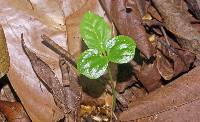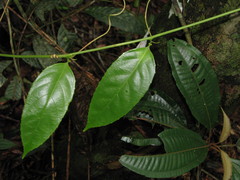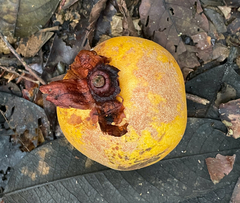

|
|
|
|
Family: Passifloraceae
|
H.B.K., Nov. Gen. & Sp. 2:130.1817 Coarse vine, glabrous. Stipules linear; petioles 1.5-2 cm long, biglandular above the middle; blades ovate-oblong, acuminate, rounded to subcordate at base, 11-19 cm long, 6-11 cm wide, subcoriaceous, serrulate. Flowers solitary; peduncles 2-3.5 cm long, jointed directly beneath the flower, bracteate, the bracts 2, conspicuous, ovate-elliptic, ca 3.5 cm long and 2.5 cm wide, rounded at apex and base; sepals 5, oblong-elliptic, to 5 cm long, greenish outside, white inside; petals 6, similar, white; filaments of corona about 4 cm long, white with pink and blue; stamens 5, purple; pistil pinkish. Berries obovoid, blunt at apex, red-orange to orange-red or magenta, densely punctate with lighter dots (these often run together), 6-8 cm long, 4.5-6 cm wide, glabrous, the withered flower often persisting; pericarp 1-1.5 cm thick, spongy; seeds obovate, ca 7 mm long, punctate, black. Shattuck 675, Zetek 3620. The Panamanian collections of this species have generally greater dimensions than those from South America. Also, the petiolar glands are slightly below the apex (about one-third of the way down the petiole), instead of at the apex as on South American species. Panama to the Guianas, northern Brazil, and Peru. In Panama, known from tropical moist forest on BCI, from premontane wet forest in the Canal Zone, Colón, and Panama, and from premontane rain forest in Darien (summit of Cerro Pirre). |








